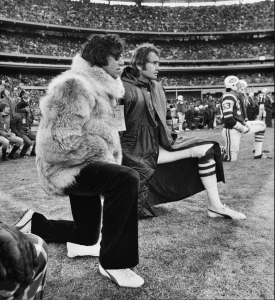 We’ve been talking a lot (particularly this week) about the companies that are doing social all wrong.
We’ve been talking a lot (particularly this week) about the companies that are doing social all wrong.
Let’s turn the tables today and look at a company that is doing it exactly right.
The New York Times.
It’s not like they’ve been without fault. When they announced their online premium paid subscription model last year, many people flocked to RSS feeds that allowed them the same content they’d received for free for, well, free.
There was debate, both internally and externally, about whether or not the model would work.
At the time, I selfishly defended them. Because of Spin Sucks Pro, we need people to be willing to pay for unique and highly relevant content.
And yet, it’s still remains to be seen whether or not it’s actually going to make some money…nearly a full year later.
But charging for content isn’t the only thing the 161 year old Gray Lady is doing to stay up with the times.
Yesterday, when Facebook rolled out the Timeline for businesses, they were one of the first to roll out, not only a cover photo that shows their employees on two levels of the organization’s building, but also historical data (see the dates on the side), going back as far as the 1850s.
But that’s not it.
They also are using Tumblr to showcase photos from its storied past. Titled The Lively Morgue, they are pulling photos from file cabinets and manila folders to post on the blog, in order to not only provide photographic evidence of a rich history, but to tell a story to reengage those who may have fallen away.
In fact, the first photo to appear this morning is one of Joe Namath (in fur and velvet corduroys, none-the-less) in 1973 watching the the Jets win a game from the sidelines because of his injured elbow.
If you scroll through, you’ll find photos of policemen finding liquor hidden in dress dummies during Prohibition and paper ticks being thrown during an Apollo 11 astronaut parade.
But they’re not just for show. If you’re a photo and history nerd, you can buy images for $169. At that price, it might be pretty cool to have some photos in your home from the year you were born or the year your parents were married or even just historical events that fascinate you.
I know most of your companies are not 161 years old nor do you have photos with such rich histories (after all, how many of us have photos from Kennedy’s assassination or the 9/11 terrorist attacks?). But there are so many lessons about storytelling you can take from the newspaper, no matter how old or new your history.
How will you tell your company’s story?
